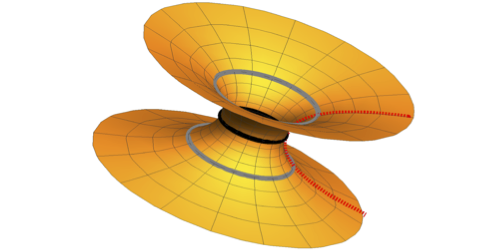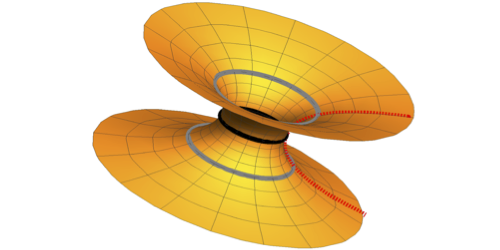Did Black Hole “Mimickers” Produce LIGO Signal?
In September 2015, the Laser Interferometer Gravitational-wave Observatory (LIGO) detected gravitational waves for the first time. Although the presumed source was a black hole merger, a new theoretical analysis shows that other hypothetical objects, like so-called gravastars, could produce a similar gravitational wave signal. The authors argue that ruling out such black hole “mimickers” will require more detailed observations of the post-merger phase.
The merger of two massive, compact objects produces gravitational waves before, during, and after the event. The post-merger, or “ringdown,” phase corresponds to the relaxation of the merged object from a highly distorted shape to a spherical one. Physicists often assume that ringdown waves are a direct sign that the merger produced a black hole. But Vitor Cardoso from the University of Lisbon, Portugal, and collaborators show that an unbiased ringdown analysis needs to take into account alternative models (for example, gravastar and firewall).
These alternative models deny the possibility of event horizons—the no-exit boundaries that define black holes. However, compact objects within these models would still have a light ring—the relativistic boundary within which photons can be trapped in circular orbits. Cardoso and his colleagues calculated the ringdown phase from a generic horizonless compact object. They modeled the light ring around this black hole mimicker using a wormhole, which is a double-funnel warping of spacetime. The results showed that the mimicker’s gravitational waves are nearly indistinguishable from the black hole case, up until the end when the two signals diverge. Unfortunately, LIGO’s data from September 2015 falls off before this divergence, so louder events or more sensitive detectors will be needed to determine whether ringdown behavior confirms black holes.
This research is published in Physical Review Letters.
–Michael Schirber





